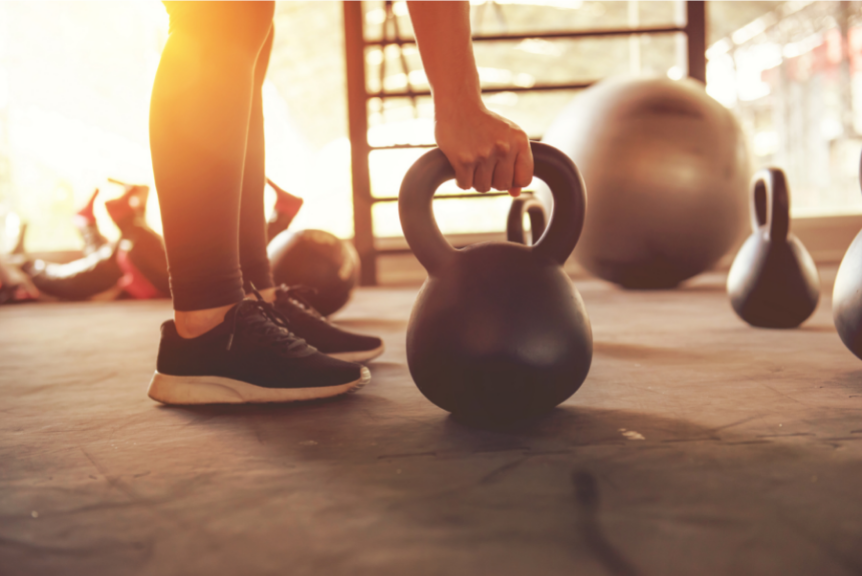Most Americans do not meet the recommended physical activity guidelines by the American Council of Sports Medicine. These guidelines state, “All healthy adults aged 18–65 yr should participate in moderate intensity aerobic physical activity for a minimum of 30 min on five days per week, or vigorous intensity aerobic activity for a minimum of 20 min on three days per week. Every adult should perform activities that maintain or increase muscular strength and endurance for a minimum of two days per week.”
The number one reason people claim they cannot meet these recommendations? Time. Though we all have the same 24 hours a day; jobs, family and other commitments can vary tremendously. As stated above, it is recommended to either workout 150 minutes over 5 days or workout a bit harder for 60 min over 3 days. That is a huge difference for those with time constraints. If you are short on time or as we enter the busy fall and holiday season, consider working out harder not longer.
For years, working out for an hour or taking an hour-long class seemed to be the norm for many people to consider the workout to ‘count.’ But in reality all movement counts. If you have time for a longer workout, great, but if you only have 20 minutes, do not just give up on exercising all together as working out harder for a shorter period of time can be just as effective if not more.

A simple way to meet the recommendations of more intense exercise is through high intensity interval training or “HIIT.” The most basic explanation of HIIT is working very hard for a short amount of time (could be aerobic activity or strength training) followed by periods of rest and then repeating this cycle for a certain amount of repetitions. Though HIIT has been around for quite some time, as it was listed on the ACSM’s fitness trends in 2014, it is still popular today for its many benefits. Benefits include improvements in the following health markers:
- aerobic and anaerobic fitness
- blood pressure
- cardiovascular health
- insulin sensitivity (which helps the exercising muscles more readily use glucose for fuel to make energy)
- cholesterol profiles
- abdominal fat and body weight while maintaining muscle mass.
- increase in VO2 max and improve some cardiometabolic risk factors in overweight/obese populations.
Even with all the great health benefits listed above, HIIT is likely most popular due to time efficiency as well as the fact that workouts at a higher level of intensity tend to burn more calories than lower intensity workouts. HIIT workouts generate a higher “EPOC” or post-exercise oxygen consumption. This is the time period after a workout has ended where your body is attempting to return to pre-exercise levels. This time period uses energy and uses even more energy after a HIIT workout so your overall energy expenditure is higher than a traditional slower paced exercise session.
Though there are tons of benefits of HIIT workouts, there are also some cons and/or precautions that need to be considered.
For exercisers to really get the full benefit, it is necessary to get fairly uncomfortable. You will want to be breathing hard and pushing yourself. A lot of people do not like to get to that level of uncomfortableness. Though higher intensity does not necessarily mean higher impact, many HIIT workouts can be higher impact and faster paced. Anyone with injuries, chronic conditions, just starting to exercise or returning to exercise after a longer layoff will want to start slow and get the approval from their medical professional before attempting HIIIT workouts. Recovery is also even more important when performing HIIT, so extra time might be needed between these types of workouts.
The good news is HIIT workouts can really be done with any type of exercise modality (biking, running, swimming, weight lifting, body weight resistance training etc.) and with various work to rest ratios, can be adapted to many different levels of fitness.
The many benefits of HIIT should not completely replace all slower, longer and endurance based workouts as they still do have a place in a well-rounded exercise routine. If you are training for any type of endurance event, then most of your workouts should be slower and more endurance based. Or if you are currently dealing with high amounts of stress, then you should prioritize longer and slower types of workouts since HIIT workouts can be stressful on the body.
As we enter the busy fall followed by the holiday season, harder and shorter workouts can be a great way to maintain a solid exercise routine. No longer are hour-long workouts necessary to stay in shape or maintain your weight. Got 20 min? Got even 15 min? Throw in a quick HIIT workout before grabbing the kids from school. Traveling? Complete a quick 20 min bodyweight only HIIT workout in your hotel room Throwing together a HIIT workout can be super simple. For aerobic activity, select running, cycling or any mode you prefer. Work hard for 30 seconds, rest for 1-2 minutes. Repeat as many times as you like or until feeling quite fatigued. As you become stronger, decrease the amount of time you are resting and/or increase the amount of time you are working. For a strength HIIT, follow the same concept but select a strength exercise such as squats, lunges or push-ups.
Even super short workouts can be effective if working hard enough. Remember, all movement counts.

Resources:



